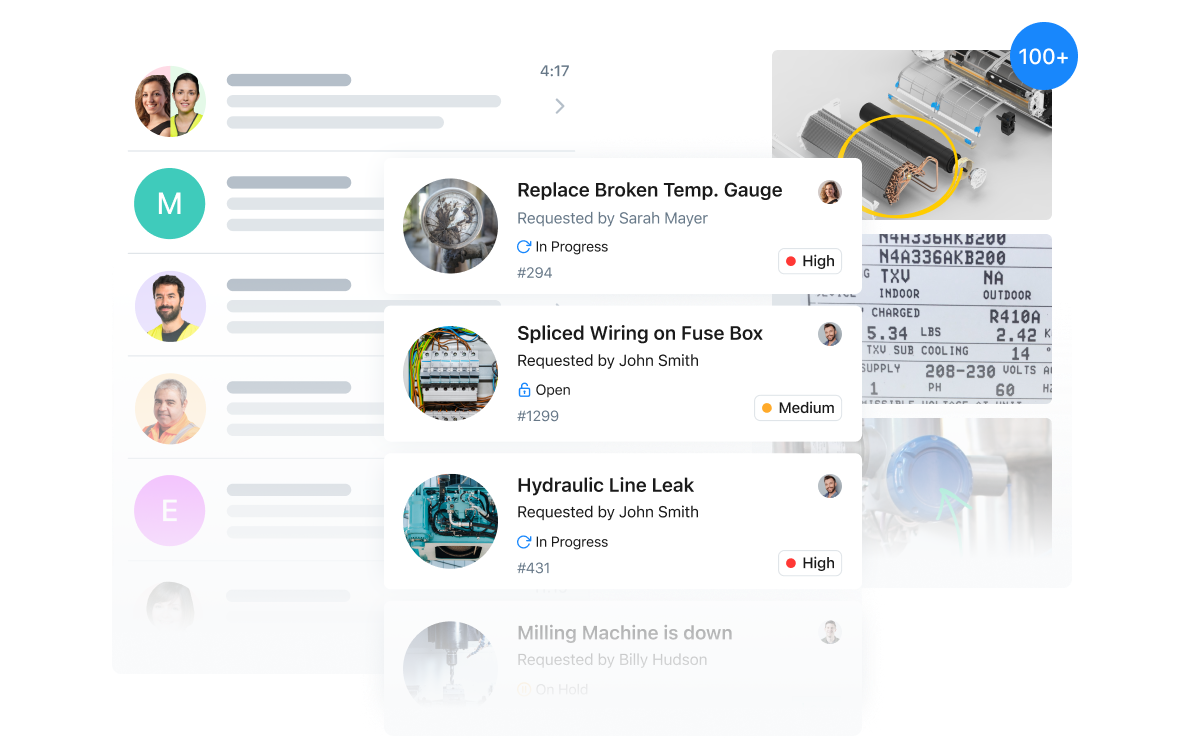
Standard operating procedures are step-by-step instructions that communicate approved business processes to staff. Effective standard operating procedures show how to do something, when to do it, and how to know whether it’s been done well.
Most manufacturing facilities incorporate at least some standard operating procedures (SOPs) into their business operations. From specific ways to receive incoming parts to step-by-step procedures for assembling a product, SOPs help standardize work to ensure each individual involved in production or maintenance carries out their tasks in the same way.
Good SOPs create consistency, ensure predictable quality outcomes, and help employees feel more confident in their tasks.
However, once management teams and supervisors start to see the incremental wins that come from their staff following procedures, it can be easy to get carried away with operationalizing every single aspect of your business.
Sure, standard operating procedures are critical to running a successful organization. But, too much conformity to rules can become a burden for employees. Overly prescriptive SOPs cease to be effective and may have the opposite effect on your Lean aspirations.
“. . . it has become increasingly clear that the most successful organizations are those that deeply commit to the disciplines of lean management. They are the ones with the flexibility to respond to changing market demands and deliver what customers value as efficiently as possible.”
McKinsey
So how can managers and supervisors strive for efficient, lean, consistent workflows without bogging down employees in minuscule or unnecessary details?
Let’s unpack what is involved in creating SMART SOPs and where to draw the line with procedures. Ensure you leave space for staff to maintain ownership, show critical thinking, and experience satisfaction in their roles.

5 Reasons Why You Need Good SOPs
The best SOPs will benefit your company by offering:
- Consistency in products, even when different operators make them
- Approved and standardized documentation of your best practices
- Stored knowledge retained within the business (i.e., you won’t lose crucial intellectual property (IP) when critical staff leave)
- Fewer recurrent problems when staff understands why procedures are in place
- Better quality assurance outcomes and more straightforward auditing

The Opposite of Lean: When SOPs Go Bad
We’ve covered what makes for a lousy SOP. Next, let’s look at how to write a standard operating procedure that sets you and your employees up for success.
SOPs can be incredibly helpful for new team members, helping them understand expectations and standards to hit the ground running. Use them to onboard and train new employees. Give new hires the templates and checklists they need to carry out everyday tasks in their new roles. We’ve covered what makes for a lousy SOP. Next, let’s look at how to write a standard operating procedure that sets you and your employees up for success. SOPs can be incredibly helpful for new team members, helping them understand expectations and standards to hit the ground running. Use them to onboard and train new employees. Give new hires the templates and checklists they need to carry out everyday tasks in their new roles.
Likewise, long-term employees also benefit from the systematic and repeatable approach to tasks. SOPs save time thinking about what tools they need and what steps to follow. In addition, standard operating procedures help create routines around tasks, cultivate confidence in the work, and positively affect productivity and quality.
However, management can only achieve these significant benefits when SOP documents are well-written, clear, concise, and relevant to the job being undertaken.
However, standard operating procedure documents often start with these positive intentions but end up with vague, too long, or overly prescriptive work instructions. Eventually, these lackluster SOPs fall out of use and become completely out of date.
Unmaintained SOPs are virtually useless. The entire system gets relegated to the archives, chalked up as a failure, or blamed on “employees not following the system.”
However, the real reasons for SOPs not working are often as nuanced and individual as your company.

Common problems that cause SOPs to fail include:
- Unnecessarily wordy or complex
- Full of poorly explained acronyms or jargon
- Written negatively or with a heavy focus on what not to do
- Too vague, causing employees to question how to interpret the document
- The wrong type of instruction–using images when words are more appropriate and vice versa
- SOP formats that don’t make sense–for example, long hard copy documents that would work much better as clickable online checklists
- Written by upper management or consultants who don’t have a good handle on the actual task
- Untested –SOPs that are set in stone are impractical, and any new SOPs should be viewed as a starting point to be refined over time
- Unmanaged or unmaintained, leading to conflicts when machinery, equipment, or staffing changes
- Non-compliant with industry regulations–always make sure you know your legal and safety obligations before you create your SOPs
Ultimately, management should never just hand down SOPs without consultation and care. Instead, creating high-quality procedures should be a thoughtful, considered process that involves all the relevant stakeholders, especially the people doing the job.
A collaborative approach leads to better uptake by employees. Ultimately, a more streamlined workflow with strong quality control can only be a good thing for your business.

How to Write Lean Standard Operating Procedures
1. Get the Basics Right
Good SOPs have five elements: purpose, procedures, scope, responsibilities, and accountability measures. Each of these elements should be stated in clear terms, using plain language, with bulleted lists to break down the elements of specific tasks.
2. Choose the Right SOP Format
Would a flowchart, checklist, diagram, or manual be the best way to convey the information? For example, one process may require a PDF with a table of contents, title page, and hierarchical steps.
Another may be a graphic flow chart designed for fault-finding. SOPs can come in many different formats. Owners and managers should create the document to suit the task.
3. Include Why, Not Just How
Your employees don’t just need to know how to carry out a process but why specific steps are essential. When you include the why, you convey the reasoning for the specific step-by-step process.
Technicians can bring their technical knowledge and problem-solving skills to improve processes. In turn, their performance increases, as does their knowledge base across the board, helping you to develop a lean culture.
4. Test and Get Feedback
Conduct a trial run from both a supervisor’s and an employee’s perspectives. Does the procedure work effectively for everyone? Making sure you test your SOPs can eliminate miscommunication. Likewise, testing ensures that the person carrying out the task can follow the detailed instructions.
You may want to ask someone outside your usual group of stakeholders to assess the SOP. It’s a great way to make sure it’s clear to someone with only a basic knowledge of the job.
5. Record and Distribute
Once you’re ready to roll out your standard operating procedure templates, forms, and checklists, you’ll need a place to keep them accessible to employees. Digitizing your SOPs is the simplest way, offering an all-in-one solution for using and managing SOPs across your company.

The Heart of Your Lean Business: Managing SOPs Effectively
So let’s say you have carefully produced shiny new SOP templates and documentation. Your team has accepted them. They are adding value to your workflows. Everything is flowing smoothly.
Does that mean you can tick off SOPs as a job well done?
Not quite!
Ongoing review, management, and maintenance of your SOP procedure library are just as critical as the initial implementation.
This ongoing audit process will deliver the most long-term value to your organization. So it’s worth finding the most practical and flexible way to store your SOPs that makes sense for everyone.
Let MaintainX Deploy Your SOPs
A computerized maintenance management system (CMMS) like MaintainX is game changing. MaintainX provides a centralized location to store quality, safety, procedural, environmental maintenance procedures and KPI data in real time. And it’s accessible on the spot from your mobile device or desktop.
We know that your goal is always striving for improvement. This includes better adherence to instructions and the most effective and efficient performance. Constantly reviewing and auditing your procedures with a critical eye will ensure that your SOPs continue to evolve with your business.
What if your teams follow your SOPs to the letter, but your productivity or quality remains stagnant? Review the process and create even better SOPs, continuing the cycle of building a leaner, more productive business.
FAQs

Caroline Eisner is a writer and editor with experience across the profit and nonprofit sectors, government, education, and financial organizations. She has held leadership positions in K16 institutions and has led large-scale digital projects, interactive websites, and a business writing consultancy.





.jpeg)
.jpg)
.jpeg)

.jpeg)



.jpg)






